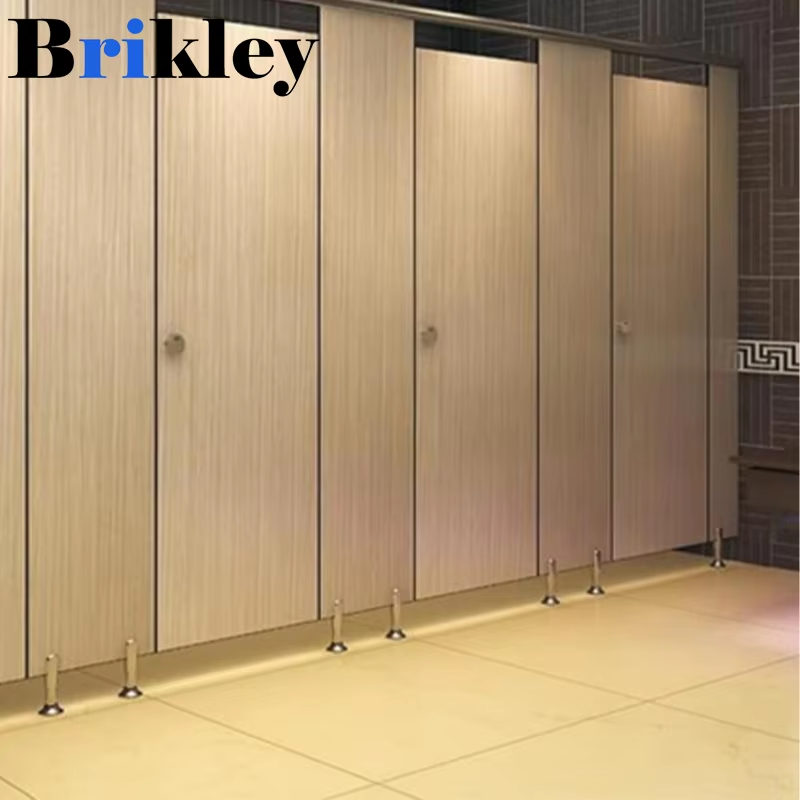Essential Guide to Selecting Commercial Bathroom Partitions
When designing or renovating a commercial restroom, selecting the right toilet partition is a critical decision that impacts both functionality and long-term maintenance costs. These essential components must withstand heavy daily use while maintaining their appearance and structural integrity. Understanding the key factors that influence partition durability and maintenance requirements will help facility managers and business owners make informed decisions that provide lasting value.
Material Options for Maximum Durability
Stainless Steel Partitions
Stainless steel toilet partitions represent the gold standard in durability and hygiene. Their non-porous surface naturally resists bacteria and makes cleaning remarkably straightforward. The material's inherent strength allows it to withstand impacts, scratches, and heavy use without showing significant wear. While the initial investment may be higher, stainless steel partitions typically offer the longest lifespan, often lasting 15-20 years with proper maintenance.
Modern stainless steel partitions often feature specialized finishes that resist fingerprints and maintain their lustrous appearance even in high-traffic environments. These finishes can significantly reduce daily cleaning requirements while preserving the material's natural antimicrobial properties.
Solid Plastic HDPE Partitions
High-density polyethylene (HDPE) has become increasingly popular for toilet partition construction due to its exceptional moisture resistance and durability. Unlike traditional materials, HDPE won't delaminate, rust, or require painting. The solid color runs throughout the material, making scratches and wear less noticeable over time.
HDPE toilet partitions are particularly well-suited for environments with high humidity or frequent cleaning requirements. Their non-porous surface prevents bacteria growth and resists graffiti, making them ideal for schools and public facilities. The material's impact resistance helps maintain appearance even under challenging conditions.
Design Features for Enhanced Maintenance
Hardware and Mounting Systems
The longevity of any toilet partition system heavily depends on its hardware components and mounting configuration. Full-length continuous brackets provide superior stability compared to standard intermittent brackets. Stainless steel hinges with integral springs ensure doors close properly and maintain alignment over time.
Advanced mounting systems that elevate partitions slightly above the floor facilitate easier cleaning and prevent water damage. This design feature also improves airflow, reducing the potential for mold and mildew growth. Selecting hardware with corrosion-resistant coatings ensures these crucial components maintain their functionality throughout the partition's lifetime.
Panel Construction and Edges
The construction method of partition panels significantly impacts their durability and maintenance requirements. Seamless edges and rounded corners reduce dirt accumulation points and make cleaning more efficient. Interlocking panels with concealed mounting hardware not only create a cleaner aesthetic but also eliminate spots where moisture and bacteria can accumulate.
Reinforced corners and edges help prevent damage from impacts and reduce the likelihood of delamination in composite materials. Some manufacturers offer additional edge protection through metal strips or specialized moldings, further extending the partition's service life.

Surface Treatments and Finishes
Anti-Graffiti Coatings
Modern toilet partitions often incorporate specialized anti-graffiti coatings that make removing vandalism easier and less damaging to the underlying surface. These treatments create a protective barrier that prevents common markers and paints from permanently bonding to the partition material. Some advanced coatings also provide additional protection against scratches and general wear.
Regular cleaning of these treated surfaces requires only mild soap and water, eliminating the need for harsh chemicals that could potentially damage the partition material. This characteristic not only simplifies maintenance but also extends the overall lifespan of the installation.
Antimicrobial Protection
Incorporating antimicrobial technology into toilet partition surfaces has become increasingly important for public health considerations. These treatments inhibit the growth of bacteria and other microorganisms, maintaining a more hygienic environment between cleaning cycles. The most effective antimicrobial protections are integrated into the material during manufacturing rather than applied as surface coatings.
Facilities with antimicrobial toilet partitions often report reduced cleaning frequency requirements while maintaining acceptable hygiene standards. This technology proves particularly valuable in healthcare facilities, schools, and other environments where infection control is a priority.
Cost Considerations and Long-term Value
Initial Investment Analysis
While budget constraints often influence partition selection, focusing solely on initial costs can lead to higher long-term expenses. Premium materials and construction methods typically command higher upfront prices but offer superior durability and reduced maintenance requirements. Calculating the total cost of ownership over the expected lifespan provides a more accurate comparison between different options.
Consider factors such as replacement frequency, maintenance requirements, and potential downtime when evaluating different toilet partition options. Materials that resist damage and maintain their appearance longer often prove more economical despite higher initial costs.
Maintenance Cost Projections
Different partition materials and finishes require varying levels of maintenance, directly impacting operational costs. Materials resistant to graffiti, scratches, and general wear typically require less frequent repairs or replacement of components. Additionally, surfaces that clean easily with standard products reduce labor costs and minimize the need for specialized cleaning agents.
Tracking maintenance expenses helps facility managers justify investments in higher-quality partitions that reduce long-term operational costs. Documentation of repair frequency and cleaning requirements provides valuable data for future purchasing decisions.
Frequently Asked Questions
What is the most durable material for toilet partitions?
Stainless steel and solid plastic HDPE are considered the most durable materials for toilet partitions. Stainless steel offers superior resistance to impacts and vandalism, while HDPE provides excellent moisture resistance and never requires painting or refinishing.
How often should toilet partitions be replaced?
The lifespan of toilet partitions varies by material and usage conditions. High-quality stainless steel or HDPE partitions can last 15-20 years with proper maintenance, while lower-quality materials might need replacement after 5-10 years. Regular inspections help determine when replacement becomes necessary.
What features make toilet partitions easier to maintain?
Features that enhance maintenance include elevated mounting systems, seamless construction, anti-graffiti coatings, and antimicrobial protection. Full-length brackets, quality hardware, and moisture-resistant materials also contribute to easier maintenance and longer service life.


